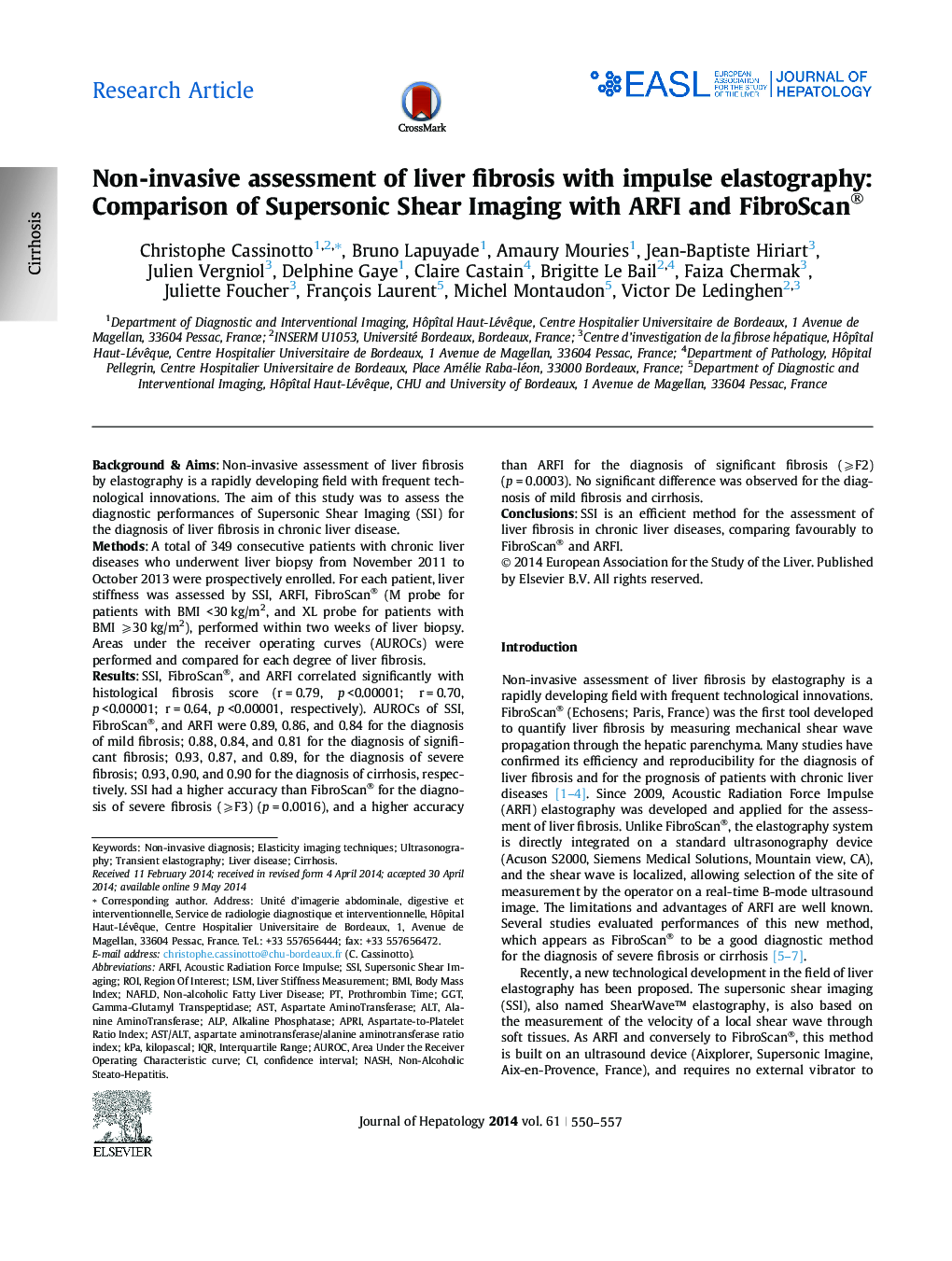| Article ID | Journal | Published Year | Pages | File Type |
|---|---|---|---|---|
| 6103239 | Journal of Hepatology | 2014 | 8 Pages |
Background & AimsNon-invasive assessment of liver fibrosis by elastography is a rapidly developing field with frequent technological innovations. The aim of this study was to assess the diagnostic performances of Supersonic Shear Imaging (SSI) for the diagnosis of liver fibrosis in chronic liver disease.MethodsA total of 349 consecutive patients with chronic liver diseases who underwent liver biopsy from November 2011 to October 2013 were prospectively enrolled. For each patient, liver stiffness was assessed by SSI, ARFI, FibroScan® (M probe for patients with BMI <30 kg/m2, and XL probe for patients with BMI ⩾30 kg/m2), performed within two weeks of liver biopsy. Areas under the receiver operating curves (AUROCs) were performed and compared for each degree of liver fibrosis.ResultsSSI, FibroScan®, and ARFI correlated significantly with histological fibrosis score (r = 0.79, p <0.00001; r = 0.70, p <0.00001; r = 0.64, p <0.00001, respectively). AUROCs of SSI, FibroScan®, and ARFI were 0.89, 0.86, and 0.84 for the diagnosis of mild fibrosis; 0.88, 0.84, and 0.81 for the diagnosis of significant fibrosis; 0.93, 0.87, and 0.89, for the diagnosis of severe fibrosis; 0.93, 0.90, and 0.90 for the diagnosis of cirrhosis, respectively. SSI had a higher accuracy than FibroScan® for the diagnosis of severe fibrosis (⩾F3) (p = 0.0016), and a higher accuracy than ARFI for the diagnosis of significant fibrosis (⩾F2) (p = 0.0003). No significant difference was observed for the diagnosis of mild fibrosis and cirrhosis.ConclusionsSSI is an efficient method for the assessment of liver fibrosis in chronic liver diseases, comparing favourably to FibroScan® and ARFI.
